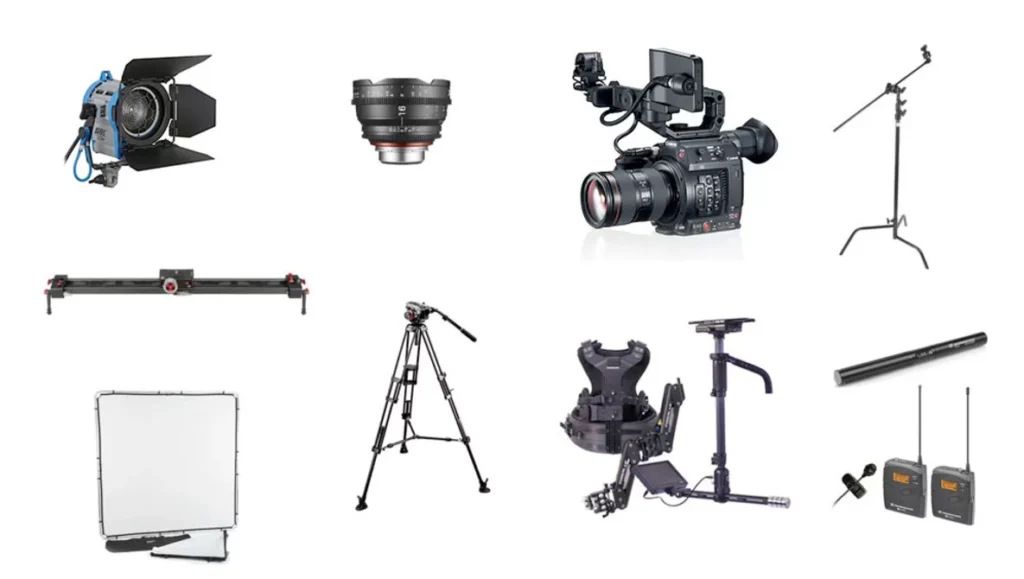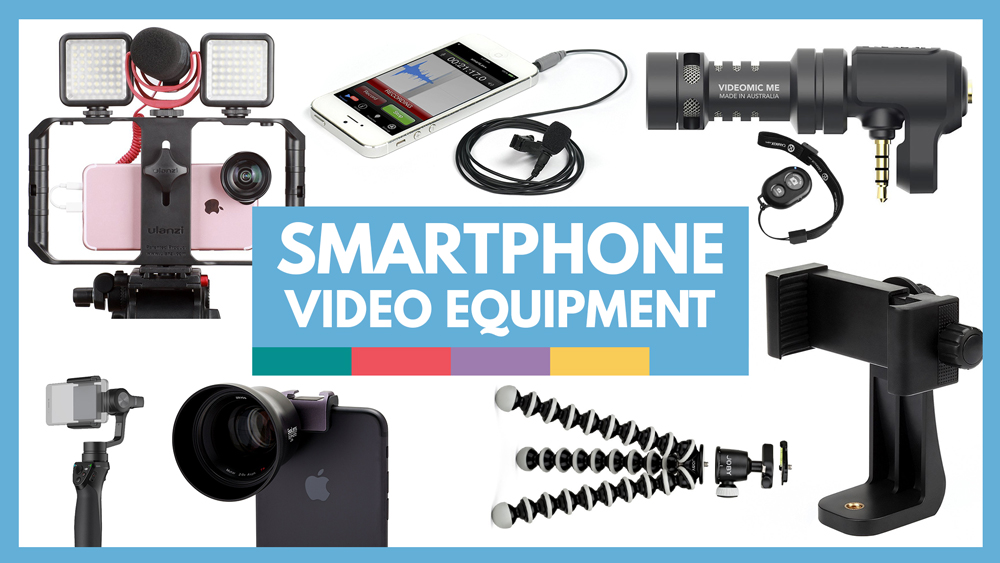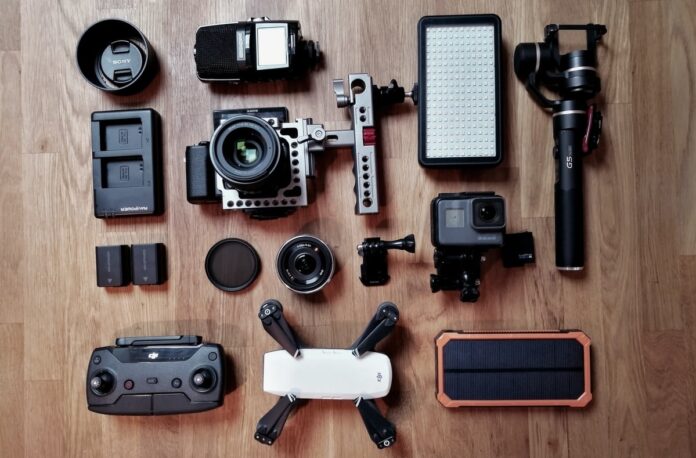Choosing the right videography equipment is the first step to creating great videos, especially if you are just starting out. First of all, having a good camera is important. This could be a DSLR, a mirrorless camera or even a smartphone with a decent camera. Next, to avoid shaky videos, a tripod or handheld stabilizer is very helpful.
Once you have recorded your footage, the next step is editing. Overall, starting with simple videography equipment helps you build a strong foundation. So, you can focus on learning techniques, telling stories and creating content you are proud of.
Videography equipment: For phones, cameras and for beginners

Getting into videography doesn’t mean you need expensive gear or professional setups. Whether you are filming with a smartphone, a camera or just starting out as a beginner, the right videography equipment can make a huge difference in the quality of your videos. No matter your device or experience level, starting with simple, effective equipment helps you learn faster and create film productions that look and sound great.
Essential Videography Equipment for Camera Users
For those starting with a dedicated camera, here is a breakdown of essential equipment:
1. A Good Camera That Records Clear Videos
The camera is the heart of your videography setup. Entry-level options like Sony ZV-E10 is a mirrorless camera offering 4K recording and interchangeable lenses, ideal for vlogging and content creation. Canon EOS R50 is a lightweight mirrorless camera with 4K capabilities and user-friendly controls. Fujifilm X-S20 is known for its excellent color science and 6.2K video recording, suitable for both photography and videography.
2. A Tripod to Keep Your Camera Still
A tripod is a stand that holds your camera steady. This helps stop your videos from shaking, so they look smooth and nice. Tripods come in many sizes pick one that is strong but easy to carry.
3. Lighting to Make Your Video Look Better
Proper lighting enhances video quality. Godox SL60W is a budget-friendly continuous light source suitable for indoor shoots. Then, Neewer 660 RGB LED Light Kit is a versatile lighting solution with adjustable color temperature.
4. A Microphone for Better Sound
Good sound is very important. Most cameras have built-in microphones but they don’t always record clear audio. Using an external microphone, like a small clip-on mic or a shotgun mic, makes your voice or sounds much clearer.
5. A Stabilizer or Gimbal for Smooth Moving Shots
To achieve smooth, cinematic footage, a gimbal stabilizer is essential. Zhiyun Crane-M2 is a versatile gimbal compatible with various camera sizes. DJI Ronin-SC is a compact gimbal offering excellent stabilization for mirrorless cameras.
6. Different Lenses for More Creative Shots
Different lenses help you take different kinds of videos. Wide lenses show big scenes, while zoom lenses get close to small details. Using lenses lets you be creative with your videos.
7. Extra Batteries and Memory Cards to Keep Filming
Video uses a lot of battery and memory. Having extra batteries and memory cards means you won’t have to stop filming because your camera ran out of power or storage.
Essential Videography Equipment for Phone Users

Using your phone to make videos is a great way to get started with videography. First, most modern phones can record high-quality videos, so you already have a powerful tool in your hands. However, to make your videos look more professional, you will need a few extra pieces of equipment.
For example, a tripod helps keep your phone steady and avoids shaky footage. Next, an external microphone can greatly improve the sound quality, since phone mics often pick up background noise. Good lighting is also important and simple LED or ring lights can brighten your videos.
Finally, using accessories like phone lenses or stabilizers can help you get more creative and smooth shots. Starting with these basic tools will help you make better videos and improve your skills over time.
How to Use Videography Equipment for Beginners
First, set up your camera or phone. Make sure it’s charged, has enough storage and is properly placed on a tripod. Then, attach any extra tools like a microphone or lens. Next, adjust your video settings. If you are using a phone, you can download apps like FiLMiC Pro to control these settings.
After that, focus on keeping your shots steady. Use a tripod for still shots, or a gimbal for smooth moving videos. Good audio is also very important, so it helps to use an external microphone like a clip-on or a small shotgun mic. Always test your sound before you start filming.
In addition, lighting makes a big difference. Try using a ring light or small LED panel, and place the light at a 45-degree angle to your subject for a natural look. Once everything is ready, press record and take your time. As you keep practicing, you will get better and faster. Remember, you don’t need expensive gear just learn to use what you have step by step.
Start Small and Shoot Great Videos
Getting started with videography does not require expensive gear but, just the right essentials. Whether you are using a smartphone or a camera, these tools can greatly improve the quality of your videos. Most importantly, practice using what you have. As your skills grow, you can slowly upgrade your equipment based on your needs. Remember, good storytelling, steady shots and clear audio matter more than fancy gear. Start simple, stay consistent and let your creativity lead the way.

